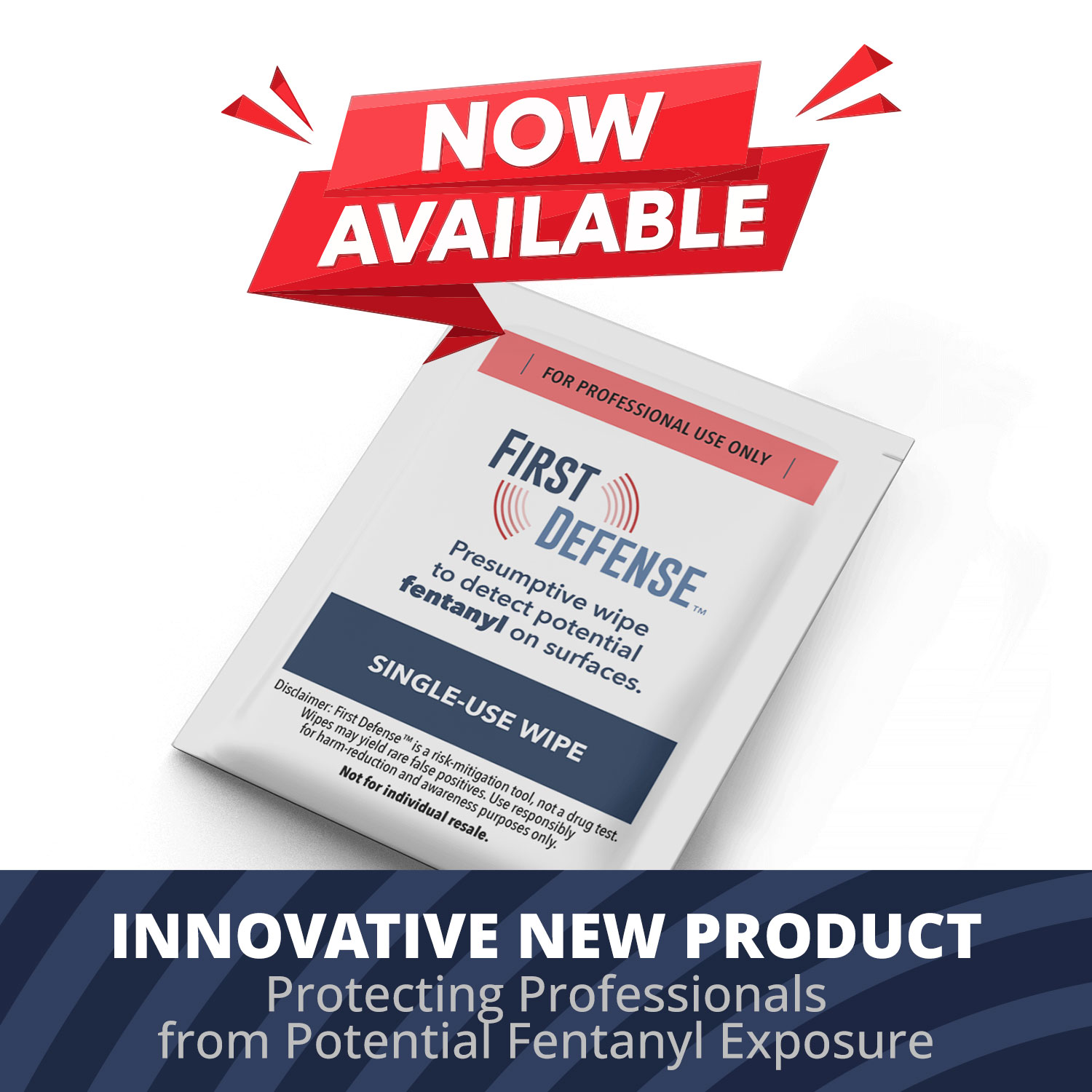Glove Specific Terms & Definitions
 7233 Green Interior Color
7233 Green Interior Color
PH&S has developed a trademark color that is featured in the interior layer of several styles of our gloves. This layer offers protection at a glance. If you see any sign of green, the glove has been compromised and should be removed. The 7233 Green Interior layer is also ASZF. This means the layer against the skin is Accelerators, Sulfur and Zinc Free and safe for some people that may have skin irritations.
510(K)
The technical dossier required by the US Food and Drug Administration (FDA) to sell a medium-eisk medical device or IVD in the United States.
Accelerator
Chemicals that are used as a catalyst which accelerate the process of turning liquid nitrile/latex into a gel form. These additional chemicals, which are added in during the manufacturing of nitrile/latex gloves, are added mainly for elasticity and durability.
Ambidextrous
Can be used on either the left or right hand.
AQL
Acceptable Quality Level, is a quality specification that the FDA and the all glove manufacturers use to specify the pinhole rate in surgical and examination gloves. The FDA specifies an AQL of 1.5 for surgical gloves and 2.5 for examination gloves. An AQL of 2.5 means the defect level from a large sampling of gloves will not be more than 2.5%.
ASTM (American Society of Testing and Materials)
Organized in 1898, The ASTM is a not-for-profit organization that provides a forum for the development and publication of voluntary standards for materials, products, systems and services in various industries. The FDA uses some of the standards and specifications developed by the ASTM to establish its requirements for examination gloves.
ASTM D6124 – Standard Test Method for Residual Powder on Medical Gloves
This test method determines the average powder or filter retained mass found on a sample of medical gloves as described in the test. The target amount of powder per powdered glove is 120mg and powder free gloves may only contain a maximum of 2.0mg powder per glove.
ASZF
The three primary chemical accelerators used in glove production are Thiurams, Mercaptobenzothlazoles and Dithiocarbamates (Carbamates). These chemicals added to the nitrile formulation provide elasticity, strength and stability to the finished glove. Chemical accelerators have been classified as a causative agent of allergic contact dermatitis or Type I Hypersensitivity or Type IV delayed Hypersensitivity. All nitrile ASZF gloves are produced without any chemical accelerators and color pigments, commonly associated with skin irritations.
Beaded Cuff
A Rolled or “bead” at the open end of a glove. The beading increases the glove strength when donning and effectively adds protection against any fluid drips.
Break Through Time
The time elapsed between the initial chemical reaction and the detection of the chemical inside the glove.
Chlorination
Instead of powdering gloves, some manufacturers dip gloves into a chlorinated solution. This process reacts with the natural rubber latex and nitrile to reduce tackiness, thus eliminating the need for additional dusting powder. Extra washing during the chlorination process provides an added benefit by greatly reducing the level of soluble proteins. It also affects some cosmetic and physical glove characteristics (softness and color).
Class I Medical Device
A device for which the controls authorized by or under sections of the Federal Food, Drug and Cosmetic act are sufficient to provide reasonable assurance of the safety and effectiveness of the device.
Class II Medical Device
A device that cannot be classified as Class I device because the sections of the Federal Food, Drug and Cosmetic Act by themselves are insufficient to provide reasonable assurance of the safety and effectiveness of the device for which there is sufficient information to establish special controls to provide such assurance, including the dissemination of guidelines. Medical Examination Gloves are considered Class II Devices.
Cuff
The upper portion of a glove which encircles the wrist. Designs range from straight, rolled (beaded) or fluted. Gauntlet cuffs offer the benefits of a safety cuff, plus a flared design that fits over the garment sleeve of the wearer.
Double Polymer Coated
An alternative to chlorination and used to achieve a powder-free product and surface finish. A glove manufactured using this technology has polymer on both the inside and outside surfaces of the glove with NO chlorination utilized in the process. Unless “no chlorination” is clearly declared, simply stating double polymer coated does not necessarily indicate that chlorination was not also used in the process. Double polymer coating, non-chlorinating a glove dramatically extends the shelf life by eliminating oxidation which occurs when chlorinated gloves are exposed to heat and sun, a frequent storage occurrence in EMS applications.
Eczema
Contact Dermatitis and inflammation of the skin, marked initially by redness, itching, minute papules and vesicles, weeping, oozing and crusting; and later by scaling. This can develop into a thickening and hardening of the skin. Causes may be allergic or non allergic.
Elongation
The measurement of the length a glove that can be stretched before it breaks. It is expressed as a percent of the original length of the glove at the moment it breaks. The higher the percent, the more stretchable the glove material.
FDA 510(k) Number
Section 510(k) of the Food, Drug and Cosmetic Act requires that all device manufacturers must register to notify the FDA, at least 90 days in advance, of their intent to market any medical device. This is known as a Premarket Notification, and allows the FDA to determine whether the device is equivalent to a device already placed into one of the three classification categories (Class I, II, III). Devices are awarded specific numbers for each product. Major product modifications may require a new 510(k) number. Search FDA releasable 510(k) database at http://www.fda.gov/cdrh/510khome.html
ISO
A worldwide federation of national standards bodies from some 100 countries, one from each country. The International Organization for Standardization (ISO) is a non-governmental organization, established to promote the development of standardization and related activities in the world with a view to facilitating the international exchange of goods and services, and to developing cooperation in the spheres of intellectual, scientific, technological, and economic activity. ISO’s work results in international agreements which are published as international standards. Also called ISO.
Latex
Natural Rubber Latex is a milky sap-like substance produced by the rubber tree called Hevea Brasiliensis, found in Southeast Asia, India and South America. When the trunks of these rubber trees are tapped, they produce latex. This latex is then collected and used in manufacturing. Natural Rubber Latex is harvested from the Hevea tree by a process of shallow cuts in the bark, called “Tapping”. Latex coagulates on exposure to air, so the tapped liquid is “preserved” with ammonia. Then the solids are separated, like cream from milk. The Latex used for medical examination and surgical gloves is filtered and combined with selected chemical ingredients to enhance elasticity, strength, durability, and resistance to damage from ozone and other aging effects.
Latex Free
Containing NO natural rubber latex (e.g. nitrile, vinyl, neoprene, etc.).
Leaching
The washing process, commonly used during the manufacturing of gloves, to remove or denature natural water soluble proteins and remove adverse materials such as processing chemical residues. Water or wet gel leaching is the process of immersing the latex coated formers into a bath or spray of water, to wash out excess additives from previous stages, such as coagulant. Chemical and protein content is reduced at this stage. The effectiveness of the process is dependent on the temperature of the water, the duration of the process and the rate of water exchange. Dry Film leaching is similar to wet film leaching, except it is carried out on the dry/vulcanized latex film. The effectiveness of this process in reducing water extractives is a function of time and temperature.
Length
Glove length is determined by the depth of hand/arm immersion in the solution and the extent of splash protection required. To protect the hand and wrist, select a glove 9-14” long (23-36cm).
Mil
Measurement used for thickness of glove. Millimeters divided by 0.25=mil. One mill=0.001 inches=0.025mm
Nitrile
Nitrile gloves are made from a synthetic polymer composed of three monomers: acrylonitrile, butadiene and a carboxylic acid. The polymer properties are dependent on variations in composition. The term “nitrile” is used as a description because many of the distinguishing features of these polymers are due to the monomer acrylonitrile. The monomer imparts permeation resistance, allowing the material to withstand exposure to a wide variety of solvents and chemicals. It also determines the softness of the product and permits nitrile to be made with either a high or low modulus.
Non-Chlorinated
The elimination of Chlorine treatment through use of coatings. Non-Chlorinated gloves generally have improved shelf life, color and scent.
Not for Medical Use/Industrial Grade/Disposable/General Purpose Gloves
Disposable Gloves are generally used in the following applications: Food handling, salons/spas, electronic assemblies, laboratorial work, and packing process, automotive,
janitorial, general pharmaceutical and home use. These gloves are not recommended for medical use or patient examination, especially to prevent transmission of organisms, blood-borne pathogens and protection against various chemicals.
Permeation
The movement of a chemical through a glove or molecular level. Data displaying permeation values represent breakthrough times when the glove is under continuous contact with the test chemical.
Pinholes
Minute holes that may be present in glove film. They are often created by presence of debris (dust, dirt, etc.) during the manufacturing process.
Polymer Coated
A synthetic material (compounded by polymerization and consisting of repeating structural units) applied to the inside of the glove during manufacturing to eliminate or reduce the need for donning powders such as cornstarch.
Powder
Donning powder on gloves is composed of modified cornstarch (USP absorbable dusting powder). Powder facilitates donning and absorbs moisture. Studies have shown powder to function as abrasive particles, immunological activators, and possibly as vehicles for the dissemination of chemicals, proteins and microorganisms. Powder has been implicated in lowering of resistance to infection. It also has been shown to interfere with wound healing processes, increasing the risk for incremental complications in OR and post-operative care.
Primary Skin Irritation Test
A test to determine if a certain material can cause skin irritation. The test material, such as a piece of glove material, is attached to the skin of test subjects, such as rabbits or guinea pigs. After maintaining the skin contact for 24 hours, the contact area is observed for up to 72 hours for any kind of skin reactions.
RezTak
A No-Stick Formulation to eliminate all tape adherences to our nitrile gloves.
Size
Glove size is determined by measuring the circumference of the hand around the palm area with a tape measure. For example, if your hand circumference is 9”, your closest glove size is a 9. Glove sizing varies, depending on manufacturer, origin, and style. Typically, examination gloves are sized as X-Small through 3X-Large.
Sterilization
The use of a physical or chemical procedure to destroy all microbial life, including highly resistant bacterial spores.
Synthetic Rubber
Manufactured and not of natural origin; produced by chemical synthesis. Synthetic gloves include, but are not limited to, vinyl (PVC), neoprene (chloroprene), nitrile, polyisoprene, styrene butadiene (SBR) and polyethylene.
Tensile Strength
The measurement of the amount of stretch or pull required to rupture or break the glove material.
Textured
The visual or tactile surface characteristics and appearance of something (e.g. a glove) represented by an uneven surface.
Thickness
The measurement of glove surface depth protecting skin from exposure to elements. Often given in mils. Conversion: 1mil = 0.001in. = 0.025mm.
Water Leak Test
A test procedure recognized under ASTM D5151 and FDA protocols to determine the AQL level of an exam glove for pin holes. The latex glove is filled with a prescribed amount of water (1000ml) and must remain completely leak-proof over a defined period of time.


